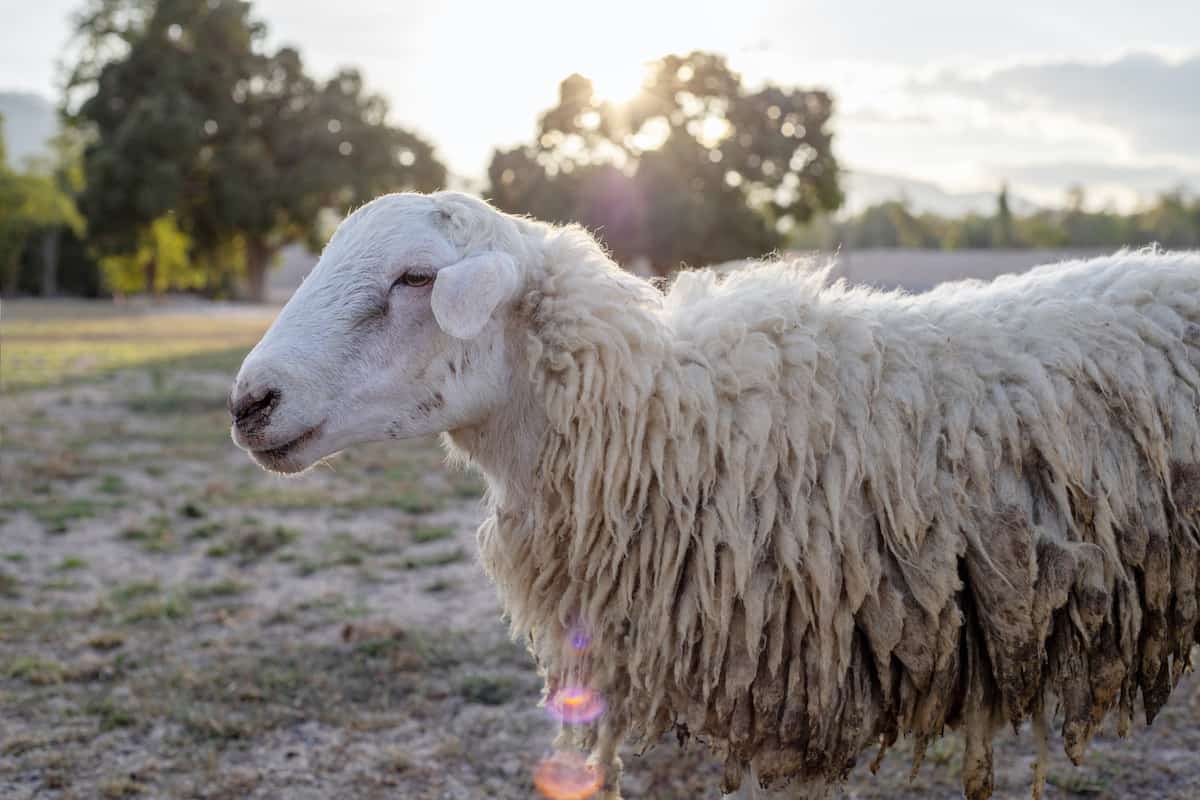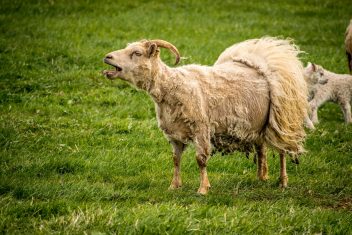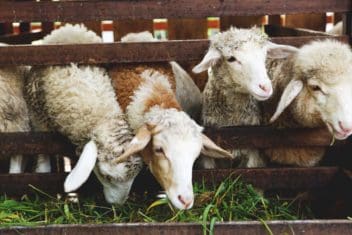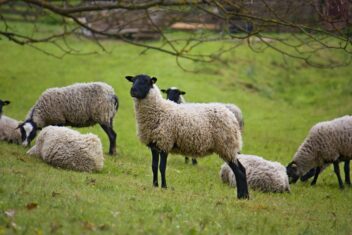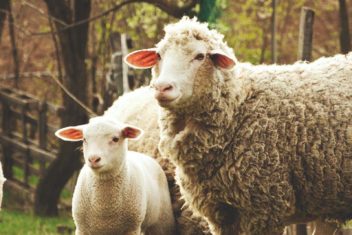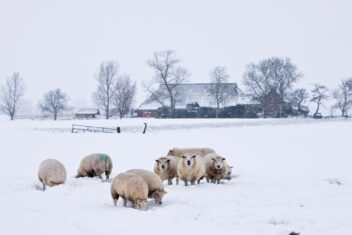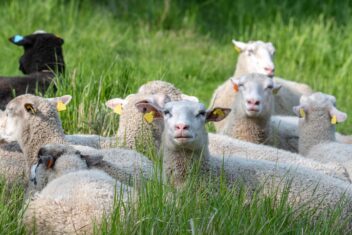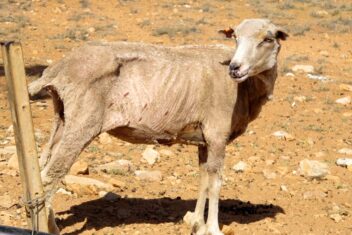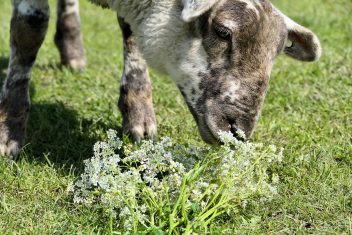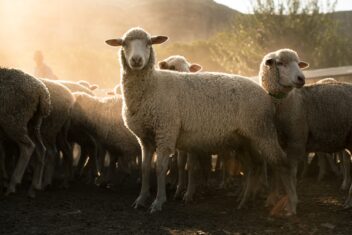It’s something that no shepherd wants to see.
You walk out to the sheep barn or pasture. There, you find your lamb, ewe, or ram covered in maggots, flies, and open sores.
Flystrike is one of those diseases that can strike incredibly fast. There are multiple types of flystrike that can threaten your flock. However, all can be deadly and extremely expensive to manage.
What is Flystrike?
Put your sandwich down – this is not the article to read on your lunch break!
Flystrike is a condition caused by flies laying eggs on the skin of a sheep’s flesh. This disease is not exclusive to sheep (it can also happen to rabbits and essentially any other animal with hair, fur, or wool).
However, this article will primarily discuss sheep. Sheep, in fact, are some of the most commonly affected animals because their damp, dirty wool attracts flies.
What happens after the flies lay their eggs is not pretty. The eggs hatch into maggots (larvae), who then eat the sheep’s flesh, causing serious sores. These can become severe enough to kill a sheep or can lead to secondary infections that also become fatal.
Signs and Symptoms of Flystrike
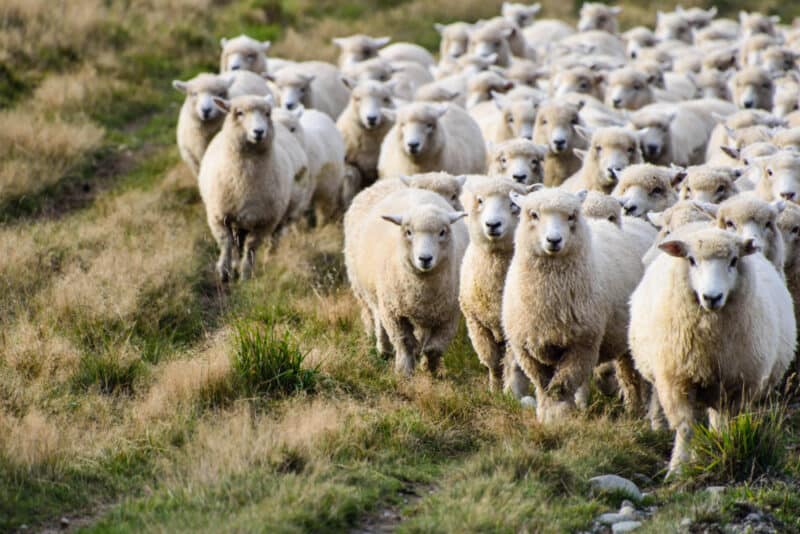
Flystrike presents itself in several ways. Unlike many other sheep diseases, which can easily be confused with similar ailments, it’s almost always obvious when flystrike is the culprit wreaking havoc on your flock.
The first sign you will likely notice is, of course, the flies surrounding your sheep or the maggots themselves. You may notice the flies first and then, upon further inspection, find the maggots burrowed beneath the wool. It’s most common on sheep who have not been shorn in a while. You may have to dig deep in order to find the larvae.
However, there are other clues you might get that your sheep aren’t feeling 100%. For example, he might be actively seeking out shade, fidgeting, or acting lethargic. He may suffer from a loss of appetite or have blackened fleece (caused by discharge from the sores). His wool may fall out and you may find large open sores.
Often, these sores are located on the rear of the sheep, on his feet, or above his shoulders, although they can be anywhere.
What Causes Flystrike?
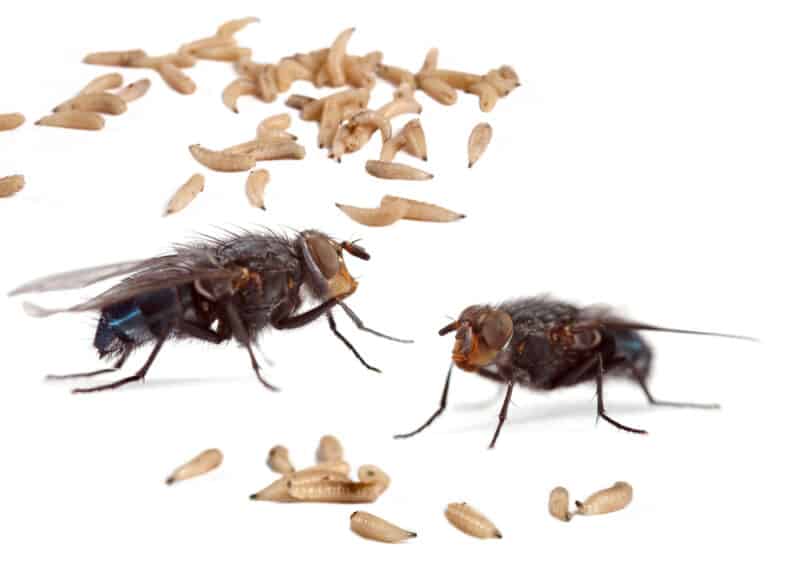
1. Certain Types of Flies
Flystrike is caused by a number of fly species, but the most common one that wreaks havoc on sheep is the blowfly. This fly initiates most strikes, but other fly species include hair maggot flies, lesser brown blowflies, and other fly species.
To make matters worse, once one fly species starts to infest a sheep’s skin, other flies will often settle in for the long haul, too.
2. Warm, Humid Weather
Flystrike is most common in warm, humid conditions, which is preferred by blowflies. However, this condition can occur anywhere in the world, at any time of the year. Recent rain tends to make conditions particularly attractive for blowflies, as it will keep parts of the sheep moist for three days or so, enough to sustain fly life.
Another climatic condition that can increase the likelihood of flystrike? The lack of wind. When wind speeds are low, flies are more active and therefore more likely to land and stay on your sheep.
3. Wounds
Flies will be attracted to open wounds on your sheep, meaning they’re more likely to hang out there and lay their eggs. If your sheep have recently been injured, even just a minor injury, it’s imperative that you treat it quickly to avoid the wounds becoming infected or infested with flies.
4. Woolly Sheep
There are some breeds of sheep that are more prone to flystrike than others. The Merino sheep, for example, has lots of natural wrinkles, where flies like to hide.
Wool sheep breeds, in general, tend to be more prone to flystrike because their wool is warm and wet, providing the perfect breeding ground for flies. On animals with shorter hair, such as hair sheep breeds, flystrike can still occur but is less of a threat because it’s more easily noticed at the outset.
How to Prevent Flystrike
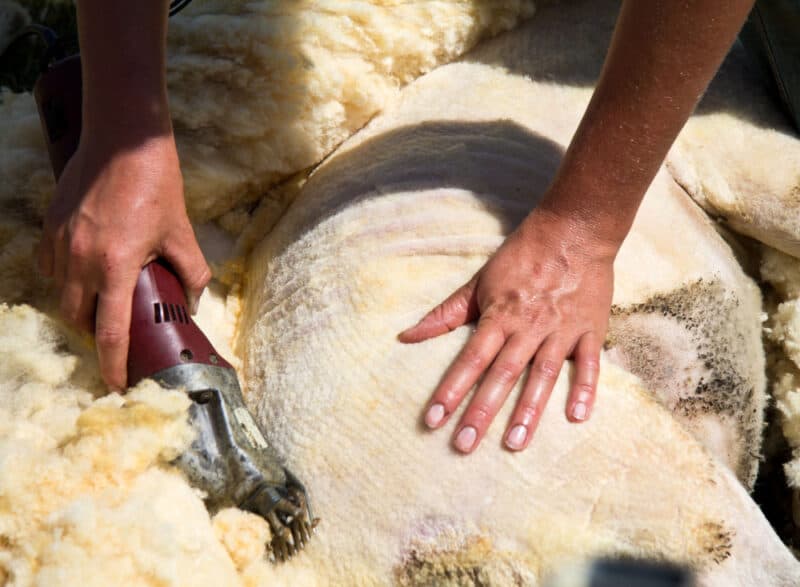
1. Shear Twice a Year
Shearing your sheep twice per year is recommended, ideally once in the fall and once just before lambing. This will remove dirty wool that can serve as a suitable habitat for flies. Plus, it’s good management anyway, as sheep need their wool to remove dirt, keep them cool and insulated, and for lambing when it can be difficult to intervene when wool is obstructing.
2. Docking
Some people recommend docking sheep (particularly lambs) to help prevent flystrike. This is a highly controversial practice that is really only recommended in commercial settings. However, if flystrike continues to be a problem for you despite trying other treatments, you may want to give it a go.
Essentially, the theory behind docking sheep to prevent flystrike is that it will prevent the build-up of dags (see our sheep glossary), which can attract the flies even further.
3. Keep Sheep Clean
Do your best to keep your sheep clean. This is much easier said than done, of course, but can really help to eliminate the likelihood of flystrike and other diseases. Make sure your sheep barn is filled with clean bedding at all times and provide your sheep with a place to get out of the rain and other inclement weather.
4. Control Internal Parasites
Having a good worm control program in place can help prevent flystrike because it will reduce the likelihood that your sheep will suffer from diarrhea. Internal parasites are the number one cause of diarrhea, which can lead to matted, dirty wool that attracts flies.
5. Use Preventative Insecticides
There are some preventive insecticides that you can use to prevent flystrike, but I wouldn’t recommend trying them unless you have a known issue with flystrike in your areas (or if it has stricken your flock in the past).
How to Treat Flystrike
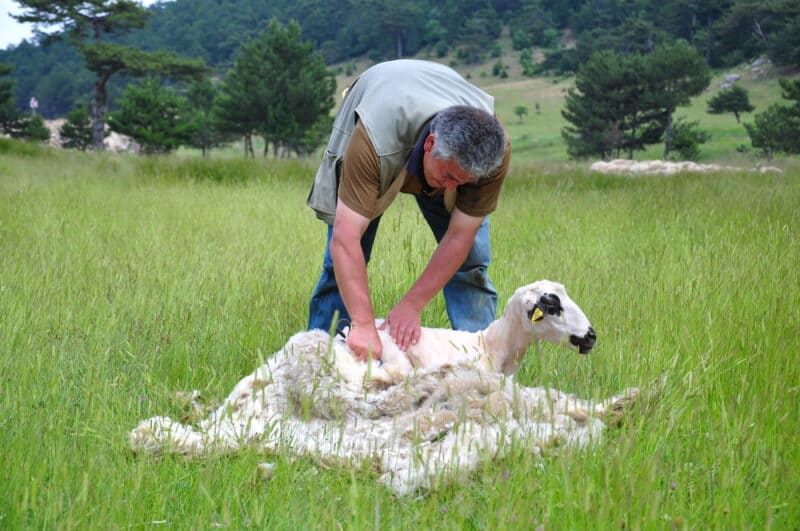
1. Shearing is Necessary
If flystrike afflicts one of your sheep, the best tip to follow is to get him sheared instantly. Even if that means you are out there with a pair of hand clippers cutting the wool yourself, make sure you get that dirty wool off.
Without shearing your sheep, you won’t have any idea of the scope or severity of the infestation. It will be a challenge for you to see what’s going on and to manage the infestation. Plus, it can reduce habitat for the flies and make your sheep a bit more comfortable in the meantime, too.
2. Isolate Affected Sheep
If only one of your sheep is affected by flystrike, isolate him from the rest of the flock. This will prevent the flies from migrating to other sheep and laying additional eggs.
3. Chemical Methods Frequently Required
Unfortunately, flystrike is one of those diseases that are very challenging to treat with non-chemical methods. Almost always, you are going to need to turn to chemical treatments to totally eliminate the flystrike.
Use an insecticide, like Permethrin, to get rid of the flystrike on your sheep. These flystrike treatments sometimes referred to as “dips” or “flystrike dressings” are meant to help kill both the flies and their maggots. They may require frequent follow-up treatments or applications to be wholly effective.
Another chemical that can be used is Cyrex. Cyrex contains two drugs – spinosad and cyromazine – and is highly effective at killing maggots and flies, too. You’ll make a dressing with this solution and use a watering can to apply it.
4. Treat Small Cases with Diatomaceous Earth
While this only has limited effect, you may be able to treat very small emergent cases of flystrike by applying a touch of diatomaceous earth. This won’t harm your sheep but will dry up the worms that are afflicting your sheep.
5. Check and Monitor for Reinfestation
Check your sheep on a daily basis to make sure they do not become re-infested. Ultimately, managing and treating flystrike is a daily struggle, but with regular monitoring, more intensive interventions should not be necessary.
Don’t Ignore Flystrike in Your Sheep
What’s most important when preventing, treating, and dealing with flystrike among your flock is to never let it go unaddressed. Severe cases often are fatal, and even minor cases are problematic.
Flystrike can cause serious distress, pain, and infection in your flock, sometimes leading to toxemia. In many cases, consulting a vet might be necessary so that you can administer antibiotics to your sheep (as well as pain relief medications) while you are treating the flystrike.
Otherwise, consider utilizing some of the methods I mentioned above to keep your sheep safe, clean, and protected from this preventable disease.
